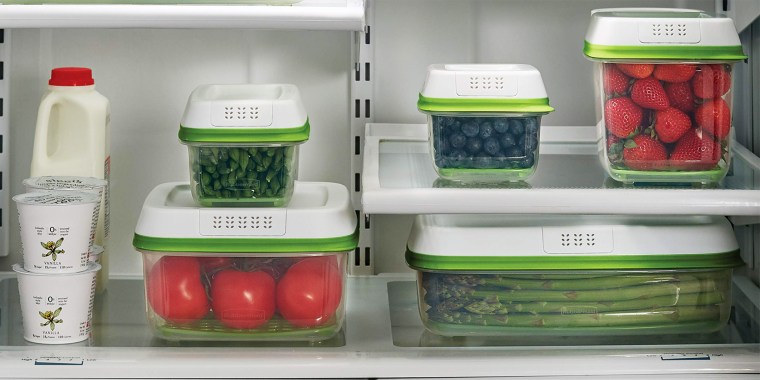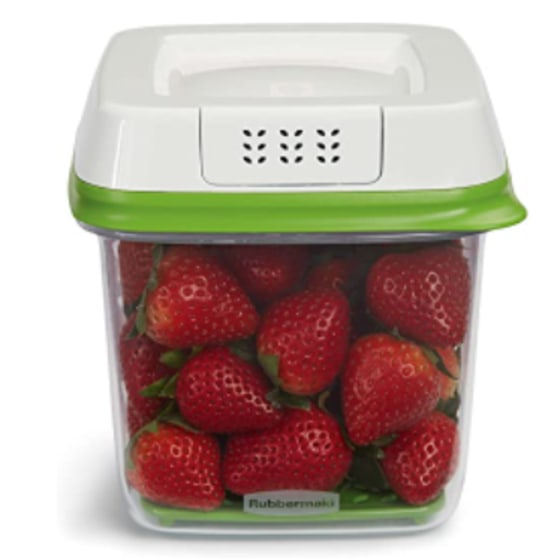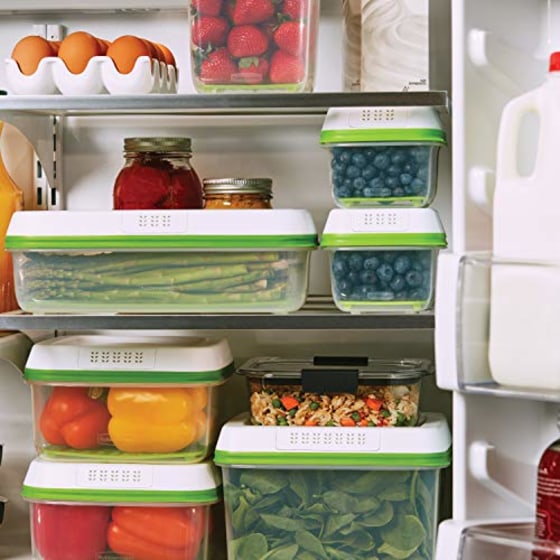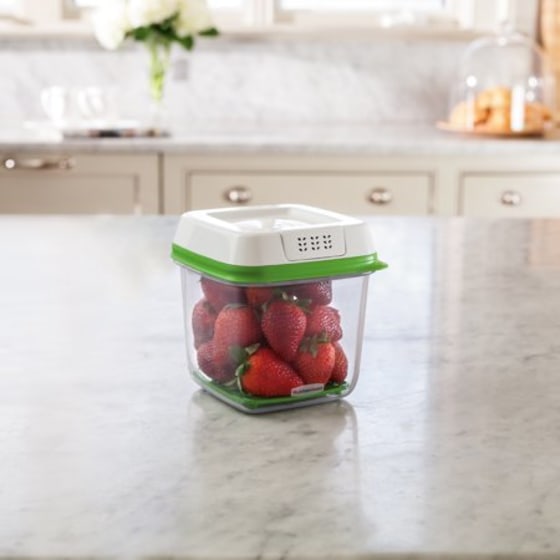If you've ever reached into your refrigerator for a healthy snack only to find rotten fruits and veggies, you're not alone. You've probably asked yourself, "Didn't I just go grocery shopping?" The answer to your question is, very likely, yes. However, the answer to your problem lies in knowing how to properly store fresh produce so that it lasts as long as possible.
To find out the best ways to keep food fresh for longer periods of time, we reached out to a few food safety and produce experts. They gave us the scoop on best practices for storing produce and how a certain type of container can help you waste less, eat more and save some money.
Store produce in vegetable bins or vented containers
Marion Nestle, professor emerita of nutrition, food studies and public health at New York University, told Shop TODAY that proper storage is all about maintaining moisture levels.
"Storage requires refrigeration and keeping moisture levels low," Nestle said. "Most refrigerators have vegetable bins for this purpose."
If your refrigerator doesn't have a crisper drawer — or it does, but it's being used as extra storage for other essentials — you may want to pick up some vented containers that can store your produce and allow excess moisture to escape.
"You can store things like berries, cherries and strawberries in vented plastic containers," said Chris Gunter, former extension vegetable production specialist in horticultural science at North Carolina State University. "The key is [to] keep moisture in, but too much moisture can lead to breakdown of the produce with storage rotting microorganisms. These are not usually harmful to people, but they break down the produce and make it inedible."
If you're looking for a popular produce saver that allows excess moisture to escape, these vented containers by Rubbermaid have some rave reviews from verified Amazon customers and nearly 17,000 five-star ratings from verified shoppers. Plus, they come in several sizes to accommodate all types of foods — from handfuls of greens to bunches of tall asparagus stalks.
Rubbermaid FreshWorks Produce Saver
Each container features a vent that is designed to regulate airflow, which should help to create an ideal environment for produce, according to the brand. Though he has not used them himself, Gunter says the vent feature in the FreshWorks containers essentially makes them a version of your refrigerator's crisper drawer.
The FreshWorks containers feature a bottom elevated "crisp" tray, which also helps control moisture levels. According to Craig Hedberg, a professor of environmental health science at the University of Minnesota, the tray should help to ensure that "things don't dry out or stay too wet."
Dr. Darin Detwiler, assistant dean and assistant teaching professor of food policy at Northeastern University, told Shop TODAY that these types of containers can also protect against potential cross-contamination. "Another benefit of these containers is that, with it being enclosed, you still have the ventilation, but it clears the opportunity for undesirable juices from raw meat to drip down into it. You don't want to have that cross-contamination."
Do not wash or cut produce before storing
In order to yield the best results, Detwiler advises people against washing or cutting produce before placing them in a vented container.
"If you look at the idea that [washing] removes a biofilm on a zucchini or a squash or a cucumber, that actually is removing a barrier — a shield, if you will — that would protect it," Detwiler said. "I would recommend waiting until you wish to eat or cook produce to wash by hand."
Rubbermaid also recommends storing your produce uncut and unwashed and even suggests putting them in the FreshWorks containers as soon as they're removed from the grocery bag. Just store them away in the fridge and prep them when you're ready — exactly the type of ease and convenience we like to have in our kitchen.





